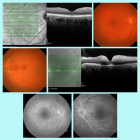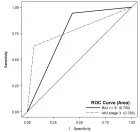About Amity University
Amity University
Articles by Amity University
Association of Toll-like receptor 2, 4, and 9 gene polymorphism with high altitude induced thrombosis patients in Indian population
Published on: 8th February, 2019
Venous Thromboembolism (VTE) is a multifactorial disease that is influenced by individual genetic background and various environmental factors, high altitude (HA) being the one. HA exposure may cause release of several damage associated molecular patterns (DAMPs), which act as ligand for various immune receptors. Previous studies on western population involving SNPs analysis of TLRs demonstrated that TLRs are involved in development and progression of several cardiovascular diseases. But, no such study has been done in Indian population in context of HA exposure. TLRs, being receptors play a significant role in manifestation and elimination of diseases by recognition of specific ligands and downstream signal transduction therefore; the genetic variation in TLRs could be implicated for imparting varying response of individuals to discrete diseases.
Therefore, in accordance with it, in present study changes in protein structures of TLR2 and TLR4 due to presence of SNP were accessed by in-silico tools to observe whether the mutation has effect on protein structure and integrity which further influencing its function. The results showed that SNP harbouring protein has decreased functional pockets, thus may be protective for disease. Taking this lead further to genotypic level, first time association between Toll-like receptor genes polymorphism and risk of high altitude induced venous thrombosis is analyzed in Indian population by PCR RFLP method. Though the result showed initial trend that TLR2 and TLR9 SNP are monomrphic in distribution and for TLR4 there was no significant difference in distribution of SNP between healthy and HA-DVT group, these SNPs have potential to be used as susceptibility markers if studied in large population size.
Quantification of minor, trace and toxic elements in stems of Santalum album (L.), Mangiferra indica (L.) and Tinospora cordifolia by instrumental neutron activation analysis
Published on: 4th March, 2022
OCLC Number/Unique Identifier: 9437625422
Stems of Santalum album (Sandalwood), Mangiferra indica (Mango wood), and Tinospora cordifolia (Giloy) are widely used in the preparation of herbal medicines and formulations in the traditional Indian health care system called Ayurveda. These were analyzed for 4 minor (K, Ca, Cl, Mg) and 13 traces (As, Ce, Co, Cr, Cu, Fe, Hg, La, Mn, Na, Se, V, and Zn) including toxic elements by instrumental neutron activation analysis (INAA). Samples in powder form along with reference materials (NIST SRM 1547 and INCT MPH-2) as comparators were irradiated for 1 min/6 h in Dhruva/CIRUS reactors at BARC, Mumbai. Gamma activity was measured by high-resolution gamma-ray spectrometry. In general, K, Ca, Fe, Mn, and Zn contents are very high in all the samples but Santalum album, widely used as a perfume, is more enriched in K, Ca, Cr, Zn, and Se. The concentration of Ca is always high as a major constituent (> 10 mg/g) in all the stem/bark of plant species. A strong inverse correlation (R2 = 0.9999) was observed between Fe and Zn in all three samples and that may be useful in drug manufacturing.
Microbiome-Gut-Brain Axis: AI Insights
Published on: 25th June, 2024
Microbiome-gut-brain axis represents a complex, bidirectional communication network connecting the gastrointestinal tract and its microbial populations with the central nervous system (CNS). This complex system is important for maintaining physiological homeostasis and has significant implications for mental health. The human gut has trillions of microorganisms, collectively termed gut microbiota, which play important roles in digestion, immune function, and production of various metabolites. Some current research shows that these microorganisms strongly influence the brain function and behaviour of individuals, forming the basis of the microbiome-gut-brain axis. The communication between gut microbiota and the brain occurs via multiple pathways: neural pathway (e.g., vagus nerve), endocrine pathway (e.g., hormone production), immune pathway (e.g., inflammation modulation), and metabolic pathway (e.g., production of short-chain fatty acids). Dysbiosis, or imbalance of gut microbiota, has been linked to mental health disorders such as anxiety, depression, multiple sclerosis, autism spectrum disorders, etc, offering new perspectives on their etiology and potential therapeutic interventions. Artificial Intelligence (AI) has emerged as a powerful tool in interpreting the complexities of the microbiome-gut-brain axis. AI techniques, such as machine learning and deep learning, enable the integration and analysis of large, multifaceted datasets, uncovering patterns and correlations that can be avoided by traditional methods. These techniques enable predictive modeling, biomarker discovery, and understanding of underlying biological mechanisms, enhancing research efficiency and covering ways for personalized therapeutic approaches. The application of AI in microbiome research has provided valuable insights into mental health conditions. AI models have identified specific gut bacteria linked to disease, offered predictive models, and discovered distinct microbiome signatures associated with specific diseases. Integrating AI with microbiome research holds promise for revolutionizing mental health care, offering new diagnostic tools and targeted therapies. Challenges remain, but the potential benefits of AI-driven insights into microbiome-gut-brain interactions are immense and offer hope for innovative treatments and preventative measures to improve mental health outcomes.
The Impact of Forensic Science on the Legal System in India
Published on: 24th February, 2025
Forensic science has significantly changed the way investigations into crimes occur by providing an approach to crime solving that is grounded in science. Since developments in investigative methods have a direct impact on litigation, its role has become increasingly important in the nation in recent years. The remarks, difficulties, and possible uses of forensic technology in the Indian legal system are discussed in this paper. By looking at case studies, legal frameworks, and forensic technology, this study emphasizes the increasing relevance of forensic science for sustaining justice, enhancing the accuracy of investigations, and overcoming problems with the use of forensic evidence in courts.
Digital Forensics and Media Offences – Investigate Synergy in the Cyber Age
Published on: 6th March, 2025
In the digital age, media offenses pose significant threats to privacy and reputation. Digital forensics plays a crucial role in combating these crimes by providing systematic methods and valuable knowledge. This work reviews how the field has proven effective in solving cases and preventing offenses, offering a solid career path for those interested in crime-solving and digital evidence collection.
Redefining Biotechnology for the Global South: The Role of Synthetic Biology and Computational Tools
Published on: 26th May, 2025
Biotechnology has always played an important role in tackling global concerns, particularly in the Global South, where socioeconomic gaps sometimes stymie scientific progress. Recent advances in synthetic biology and computational technologies have the potential to revolutionize biotechnology in these locations. Synthetic biology allows for the creation and manipulation of biological systems, with promise applications in healthcare, agriculture, and environmental control. Computational methods such as machine learning and artificial intelligence help to optimize synthetic biology processes, enabling innovations that are suited to local requirements. The combination of these cutting-edge technologies with traditional biotechnological techniques has the potential to dramatically improve the Global South's ability to solve issues such as disease outbreaks, food security, and sustainable development. This abstract outline the critical intersections of synthetic biology and computational advancements and their potential to empower the Global South, highlighting the need for supportive policies and capacity-building initiatives to maximize their impact.
Medicolegal Aspects of Deaths Due to Poisoning Occurred In Cities of Punjab and the State Of Himachal Pradesh
Published on: 17th June, 2025
A poison is a substance capable of causing illness or harm to a living organism upon contact or introduction to the body. Toxins and venoms are poisons of biological origin, with the latter usually reserved to describe the bites or stings of poisonous animals. In India, the suicide rate is 18.5 suicide deaths for every 100,000 people. The majority (79%) of suicides occur in low- and middle-income countries. Ingestion of poison is one of the most common modes of suicide in low and middle-income countries such as India [1].

If you are already a member of our network and need to keep track of any developments regarding a question you have already submitted, click "take me to my Query."



















































































































































